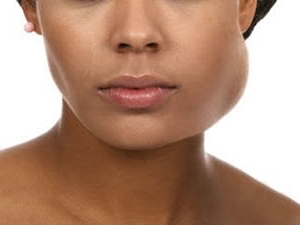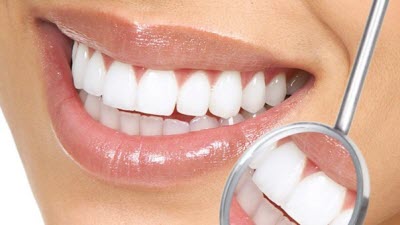Which antibiotics are prescribed for the gumboil?
Article content:
1. What drugs are recommended dentists?2. Amoxicillin
3. Ciprofloxacin
4. Doxycycline
5. Effectiveness of conservative treatment
6. Side effects
 The gumboil, or periostitis refers to inflammatory diseases of the oral cavity,
which is manifested in the formation of purulent periosteum upper or lower jaw in the form of lumps.
The gumboil, or periostitis refers to inflammatory diseases of the oral cavity,
which is manifested in the formation of purulent periosteum upper or lower jaw in the form of lumps.
The cause may be mechanical damage to tissues of the mouth, the lack of treatment of dental caries, periodontitis, pulpitis and other diseases. The agents of periodontitis, are usually streptococci or staphylococci.
The clinical picture is more pronounced in adults than in elderly people and children. The disease is manifested by pain at the site of the formation of gumboil, swelling of tissues, sometimes there is low-grade fever.
Visual inspection can be seen on the gums bump filled with pus. If the affected upper jaw, swelling extends to the area under the eye, cheek, eyelid, upper lip. With the localization of gumboil from below, it becomes edematous chin and cheek. You can also find the unilateral increase of the submandibular lymph nodes.
What drugs are recommended dentists?
Assign adequate treatment can only be a dentist, as incorrectly chosen preparations able to translate the disease into a chronic form. First, perform a dissection formation and drainage of fluid. Then spend sowing gumboil content to determine susceptibility to antimicrobial agents.
When dental gumboil necessarily apply antibiotics. Next, analyze which ones are the most commonly prescribed.
Amoxicillin, Ciprofloxacin, Doxycycline
Amoxicillin for gumboil
This drug belongs to the penicillin series. Highly active against microorganisms which lead to the development of gumboil. It is produced in the form of suspensions, tablets and capsules. Permission is granted to use the drug in doses of up to 2 years of age is determined daily dose according to the formula: weight in kilograms multiplied by 0.02 grams of the drug, which is divided into three stages; from 2 to 5 years appoint 0,125 g per reception three times; between 5-10 years of daily allowed 0.75g receiving medication.
Adults are recommended to take 500 mg every 8 hours. In severe form of the disease may be receiving 750-1000 mg at one time. The maximum dose of 6 grams per day for adults. It is forbidden to take medication during lactation, patients with lymphatic leukemia with liver failure, dysbiosis, mononucleosis. Drugs with similar effects: Ekobol, Iramox, Flemoxin, Gonoform.
Ciprofloxacin (Cipro) against gumboil
It belongs to a series of fluoroquinolones. It possesses strong bactericidal action. Available in tablets of 250, 500 and 750 mg. The dosage determined by the physician individually depending on the patient's weight. Accepted only on an empty stomach every 12 hours. During treatment should avoid prolonged exposure to the sun because of the risk of photosensitivity. Eat ciprofloxacin should not be at the pseudomembranous colitis, pregnant and nursing mothers, children under 18 years.
Doxycycline to fight gumboil
Doxycycline is a semi-synthetic tetracycline representative. Available in capsules of 100 mg. Is now taking 2 capsules 1 time per day in the following days, reduce the dose to 100 mg. This drug should not be used for the treatment of gumboil in pregnant and lactating, children up to 9 years (due to the influence of tetracycline antibiotics in the developing teeth), patients with hepatic insufficiency and leukopenia.
Similar medications: Unidox, Vibramycin, Doxibene, Xedocin.
Effectiveness of conservative treatment
 The result of treatment depends on the stage of the disease, namely the presence of pus from the site of inflammation.
If an antibiotic was chosen doctor, taking into account the sensitivity of microflora to the drug, and the dose was correctly
calculated and you comply with the schedule of reception, the recovery can be expected in 5-14 days.
In cases where there is a festering gumboil, it is necessary to carry out the dissection and removal of exudate.
The result of treatment depends on the stage of the disease, namely the presence of pus from the site of inflammation.
If an antibiotic was chosen doctor, taking into account the sensitivity of microflora to the drug, and the dose was correctly
calculated and you comply with the schedule of reception, the recovery can be expected in 5-14 days.
In cases where there is a festering gumboil, it is necessary to carry out the dissection and removal of exudate.
Otherwise, the bones may develop purulent inflammation or fistula formation.
Side effects
 Unpleasant consequences depend on the use of antibiotics, but often experience the following problems:
Lineksarterialnaya hypertension;
nausea, diarrhea, violation of intestinal microflora;
dizziness;
weakness and muscle pain;
allergic reactions such as edema, pruritus, rash.
Unpleasant consequences depend on the use of antibiotics, but often experience the following problems:
Lineksarterialnaya hypertension;
nausea, diarrhea, violation of intestinal microflora;
dizziness;
weakness and muscle pain;
allergic reactions such as edema, pruritus, rash.
For the prevention of disorders of the intestine, it is recommended to take milk products or probiotics - drugs containing the normal intestinal microflora bacteria (Linex, atsilakt). A common problem after antibiotic therapy is the development of mucosal candidiasis - the mouth, intestines, genital tract. To combat this complication prescribe drugs systemically (Fluconazole) or local (clotrimazole) action. If there are any reactions yet should contact your doctor for correction intended course.
